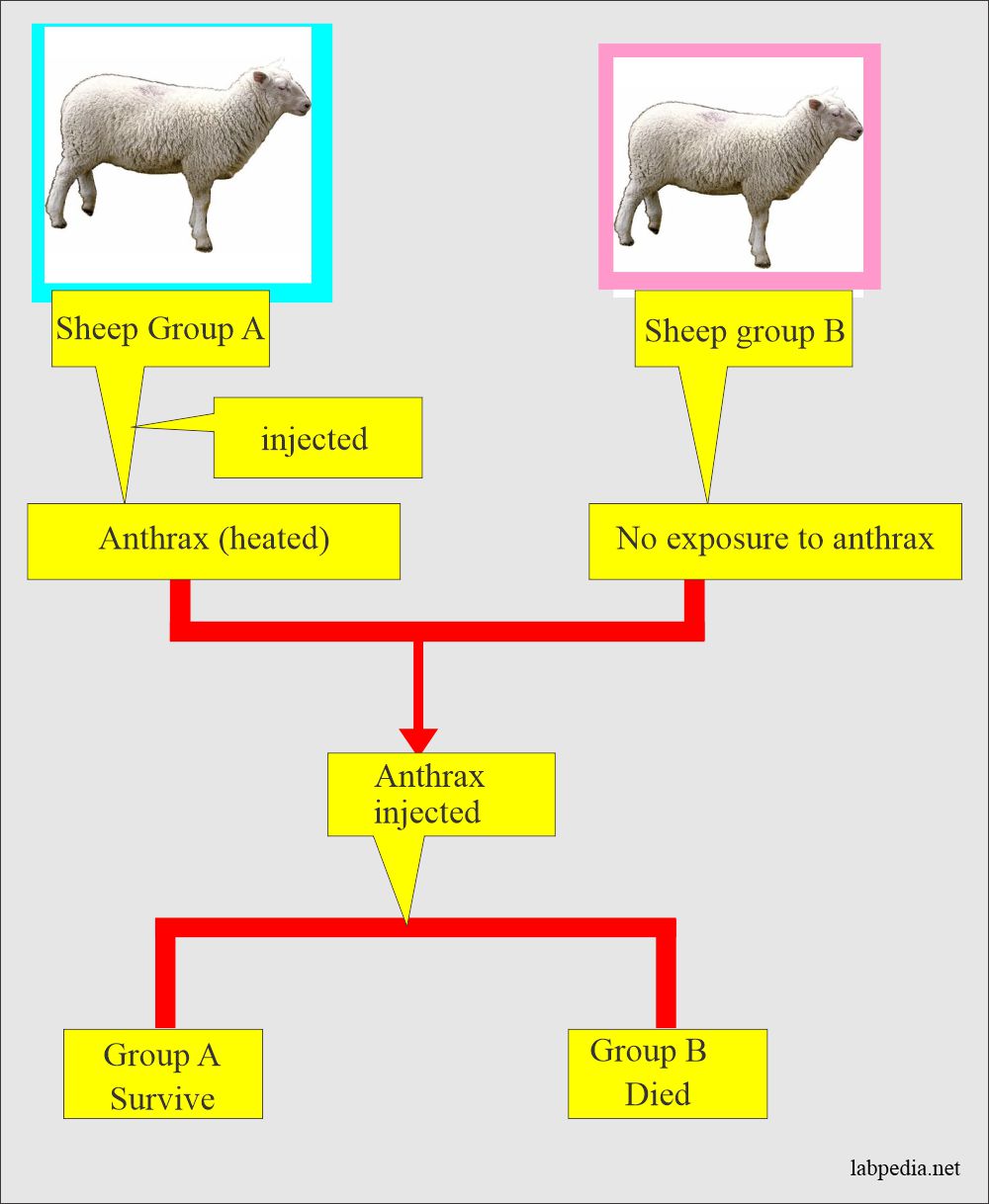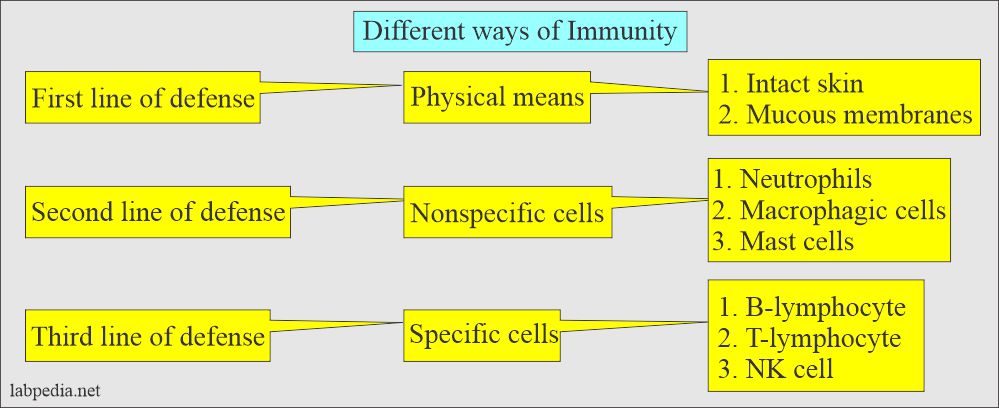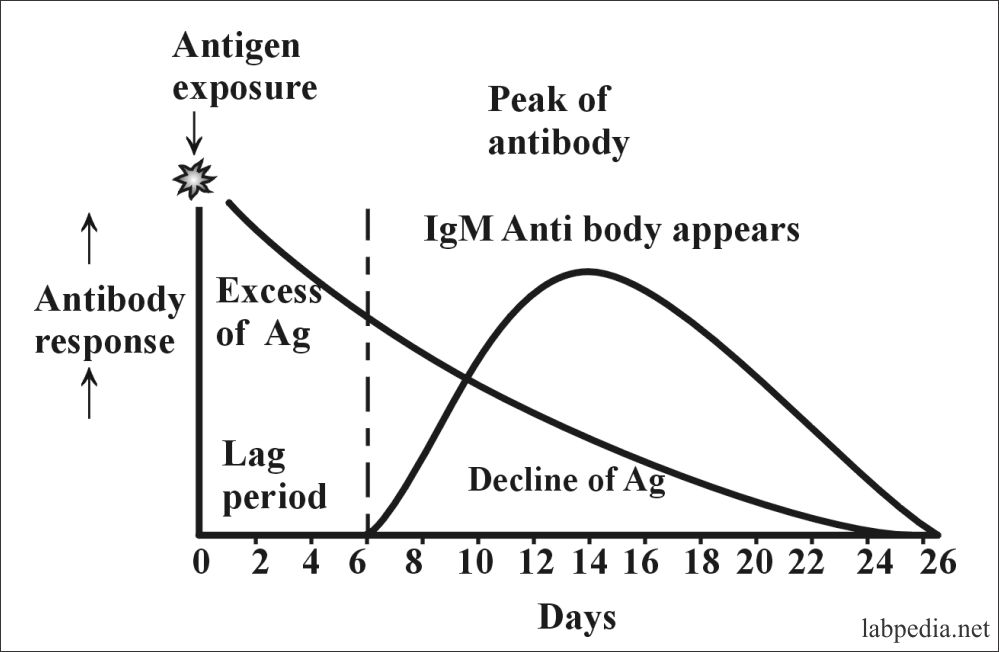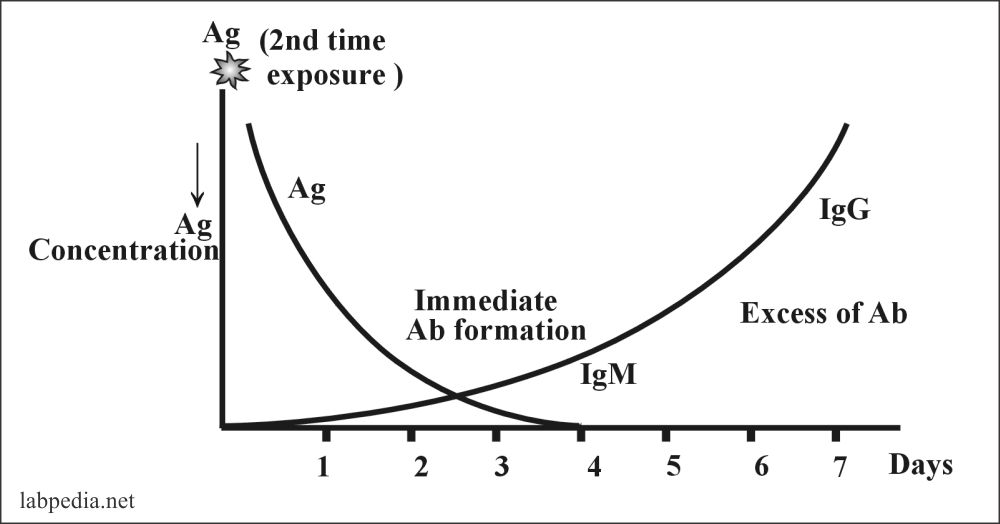Chapter 1: Introduction and History of the Immunology
Introduction and history of the Immunology
History of immunology
Immunology is a relatively new branch of the medical sciences. It started as a branch of microbiology, which led to the study of infectious diseases and then the body’s response to them.
- Girolamo Fracastro, a colleague of Copernicus, wrote about contagion, which may be a cause of a disease.
Two hundred years later, in 1798, Edward Jenner gave the concept of immunity in response to contagion. His coworker had a cowpox infection (cow means Vacca), and consequently, she was resistant to smallpox. He noticed that cowpox infection incited immunity against smallpox (Variolae in Latin). This discovery started the process of vaccination (Vacca in Latin means cow).
- Lister introduces the concept of aseptic surgery.
- Julius Bordet was a young Belgium student who showed that bacteriolysis and lysis of RBC need two factors:
- A specific factor—Sensitizer.
- A non-specific factor—Alexine.
- Louis Pasteur gave the concept of attenuation, explaining that exposure to adverse conditions can change the virulence of pathogens. He also prepared the first vaccine against cholera, anthrax, and rabies.
In 1881, he did a famous experiment on two groups of sheep where he injected the first group, group-A, with heated anthrax bacilli and presumed that these sheep developed immunity against anthrax. Group B was not exposed to heated anthrax bacilli in the second group. Afterward, he exposed both groups to live anthrax bacilli. The immunized group-A survived because of this exposure, while the non-immunized group B died.
- Klebs and Loeffler isolated diphtheria bacillus.
- Metchnikoff, a Russian zoologist, gave the idea of cellular immunity by showing the phagocytosis of fungus spores by white blood cells in the frog.
- Robert Koch’s phenomena: He showed that animals could be immunized by exposure to Tubercle bacilli and when exposed to Tuberculous bacilli, the animal showed a different reaction in the form of thickening the skin at the site of injection, which appears in 24-48 hours.
- Julius Bordet ultimately discovered complement and got the Noble Prize.
- Kraus discovered precipitation by mixing a patient’s serum and filtrate of typhoid bacilli.
- Landsteiner dominated for 40 years in the field of immunology. He discovered blood group antigens and antibodies. He also introduced the concept of incomplete antigen (Hapten). He was also awarded the Nobel Prize.
- Sir Almoth found that antibodies can help in phagocytosis and settled the controversy of humoral and cellular immunity.
- Immunology word first time appears in Medicus Index.
- Land Steiner published a book on the specificity of serologic reactions. He got the Nobel prize for his work on human blood groups.
- The first book was published on the chemistry of antigens and antibodies.
- Lady Mary Wortley Montagu was the wife of a British Ambassador in Turkey; she contracted smallpox and later advocated for smallpox vaccination.
Interesting Stories of Immunology
Ancient Chinese were injecting vesicle fluid of a smallpox patient to healthy people for developing immunity.
Greek King Pontus took poison in a small amount and then increased the dose until he could tolerate higher doses. This process is called Methriditisim.
Lady Mary Wortley Montagu, in 1721, was the wife of the British ambassador in Turkey. She also tried the process of variolation.
Portuguese army officers used the ants for the poison to detoxify the poison, and later on found that ants contain the formal, which converts the toxin to toxoid.
Immunity
Immunity is our natural defense mechanism, comparable to our real-life defense mechanisms. The following diagram shows a diagrammatic comparison between a real-life defense system and our natural defense system (immunity).
This diagram shows if the walls are high and thick, the security guards are strong, and the house will have complete protection (Immunity). Security guard 1, at the entry (Antigen-presenting cell, APC), can recognize friends and get rid of weak enemies. If he comes across a strong enemy who can enter the house, he can get help from security guard 2 (CD4+ cells/B-L) or guard no 3 (CD8+ T-L/B-L). During the encounter, if some damage in the house occurs, that is just like a hypersensitivity reaction.
If the security guard becomes dishonest and corrupt, it starts damaging the house like autoimmune diseases, where the immune system is defective. The above example shows that nature is present everywhere and has a similar system at a micro-level in our body and macro-level in our surroundings.
Definition of Immunology:
This is defined as the study of molecules, cells, organs, and the system responsible for the recognition and disposal of nonself (foreign) substances.
The function of the immune system is to recognize the nonself from the self to defend the body from the nonself.
Immunology has the following three main sections:
- Immunity is the adaptive response to foreign substances (Ag), which may be an infection.
- Immunochemistry is the study of the nature of antigens and antibodies.
- Immunobiology is the study of the activity of immune cells.
Immunology is one of the most developing medical sciences. The following are some of its recent advances:
- Immunopathology
- Tumor immunology
- Immunopharmacology
- Transplantation immunology
- Immunological disorders
The immune system is the defensive system of our body and has two types: specific and non-specific.
Non-specific Immunity
This immunity protects us from various pathogens and is the first line of defense. Non-specific immunity takes place through the following means:
- Physical
- Chemical
- Cellular
- Physiological
Specific Immunity
This immunity protects us from various specific pathogens and has a specific response for a particular antigen. Specific immunity takes place through the following means:
- Humoral—Takes place through the activation of B-Lymphocytes.
- Cellular—Takes place through the activation of T-Lymphocytes.
Let us look at an example of specific immunity. The following figure shows a child infected with smallpox and later recovering. During this process, the immune system recognized (R) smallpox, produced specific (S) antibodies, and kept memory (M) of the antigen; this RSM process is the backbone of the immune system. Afterward, whenever smallpox infects this child again, the specific immunity will notice that it is the same antigen and produce an exaggerated immune response, not allowing the infection; but exposure to other viruses (antigens) will not show such specific immunity but will instead result in repeating the RSM process.
Primary Immune response
The immune system shows a primary immune response to the first encounter with a foreign substance (Antigen, Ag). This process consists of the following four phases:
- PHASE-I: This is the initial lag period of 7-10 days, during which no anti-foreign (Antibody, Ab) substance appears in the blood.
- PHASE-II: Primary Ab-IgM appears during this phase.
- PHASE-III: Ag and Ab-reaction take place.
- PHASE-IV: Ag disappears, resulting in excess of Ab.
There is a lag period of 7-10 days before the anti-foreign substance (Antibody, Ab) appears in the blood. In the primary immune response, the IgM type of antibody always appears first, followed by the appearance of IgG. Afterward, the peak level of Ab is achieved; antigen and antibody reaction starts, which clears off the antigens from circulation.
Secondary Immune Response
When the same antigen is re-exposed to the immune system, now because of specificity, recognition, and memory, there will be no lag period, and immediately formation of Ab (IgM & IgG) takes place due to the presence of memory cells, and antigen is cleared from the circulation.
The following diagram shows both primary and secondary immune responses.
Interesting Stories of Immunology
Ancient Chinese were injecting vesicle fluid of a smallpox patient to healthy people for developing immunity.
Greek King Pontus took poison in a small amount and then increased the dose until he could tolerate higher doses. This process is called Methriditisim.








Content is absolutely elementary. Very informative & interesting (specially the diagrams).
Thanks for your critical comments.
Can you please provide the soft copy
Can you please provide the soft copy
Dear all chapters of immunology are present on labpedia.net.
Very educative indeed. Would you mind sharing with me “full immunology notes” in single PDF please?
I am sorry that I don’t have a PDF file of the Immunology book.
Thanks. Kindly allow me create one
This page is so informative and the content is really good.Thank you sir for giving such a valuable information related to immunology.
Thanks for the remarks.
Thank you Sir for giving us a valuable content. This would help us to make understand easily about immunology.
Hope you will share more content.
On labpedia.net, you can see the immunology book sections. I have covered most of the topics.
https://labpedia.net/category/elementary-immunology/
Content is very informative thanks for the article
Thanks for the comment.
This is wonderful
Thanks.
Thank you 😊
Welcome, thanks.
Ammizang sir I got many things from that
Thanks.